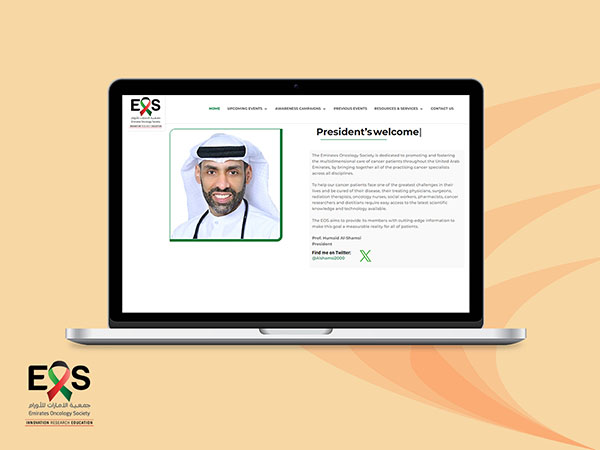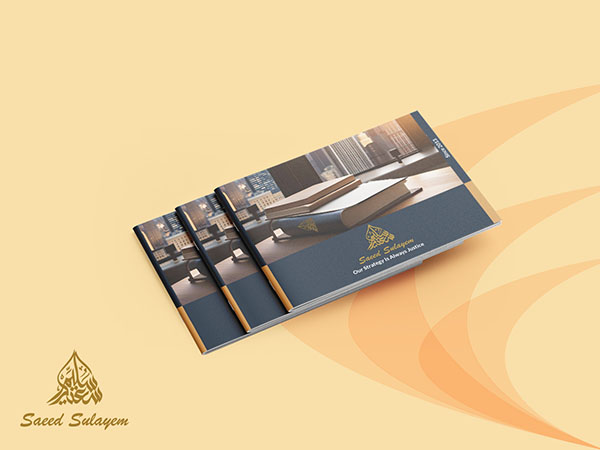
The Invisible Handshake: Why Your Website’s First Second Decides Everything
It doesn’t introduce itself. It doesn’t ask permission. The moment you land on a webpage, an invisible handshake occurs — silent, swift, and irreversible. In less than a heartbeat, your brain decides: stay or flee. Not based on promises, not on features — but on feeling. The curve of a button. The weight of whitespace. The speed at which an image blooms into focus. Before your conscious mind catches up, your instincts have already signed the contract — or torn it up. We like to think we’re rational. That we read, compare, deliberate. But neuroscience whispers otherwise. First impressions aren’t formed — they’re felt. A slow load time isn’t an inconvenience; it’s a betrayal of trust. A cluttered layout isn’t messy — it’s chaotic, and chaos triggers flight. A misaligned element? It doesn’t look “off” — it feels unsafe. The most powerful websites don’t sell. They welcome. They don’t dazzle — they orient. They understand that before logic, there is instinct. Before content, there is comfort. Before conversion, there is calm. Think of the last site you loved. You probably can’t recall its tagline. But you remember how it made you feel: safe, curious, seen. That’s no accident. That’s architecture — not of code, but of emotion. Every pixel placed to reduce friction. Every animation timed to soothe, not surprise. Every color calibrated to whisper, “You belong here.” The cursor hovers — and the button responds with a gentle glow, not a jarring flash. The form field breathes as you type, expanding just enough, guiding without crowding. The navigation doesn’t shout options — it offers pathways, clear and quiet. In a digital world overflowing with noise, the quietest experiences win. Not the flashiest, not the loudest — the most human. The ones that respect your time, honor your attention, and understand that trust isn’t earned in paragraphs — it’s granted in glances. Your website’s first second isn’t a moment. It’s a covenant. A silent vow that says: “I know why you’re here. I’ve made space for you. Take your time. I’m not going anywhere.” And when that vow is kept? You don’t just browse. You linger. You explore. You return. Not because you were sold to — but because you were understood.
Read More
What’s the Best CMS for Your Website? Let’s Break It Down.
Introduction Launching a new website? One of the first and most important choices you’ll make is picking the right CMS—short for Content Management System. Whether you’re starting a personal blog, building an online store, or showcasing your creative work, your CMS will shape how your site functions, looks, and grows. With so many options out there, it’s easy to feel overwhelmed. Let’s walk through a few of the most popular platforms, what they’re good at, and which one might be the best fit for you. 1. WordPress: The Jack-of-All-Trades WordPress is the reigning champ of CMS platforms—and for good reason. It powers more than 40% of all websites globally, and it’s loved for its balance of flexibility and ease of use. Whether you’re building a blog, a business site, or even a small e-commerce store, WordPress gives you room to grow. 2. Shopify: Built for Online Stores If your main goal is selling products online, Shopify might be your best bet. It’s built specifically for e-commerce and has just about everything you need to run a successful online store right out of the box—inventory tracking, payment processing, shipping tools, and more. 3. Wix: Great for Getting Started Fast Wix is a favorite for those who want to get a good-looking website online quickly and without fuss. Its drag-and-drop interface makes it simple to design pages, even if you’ve never built a website before. For small businesses, personal projects, or portfolios, Wix is often more than enough. 4. Joomla: A More Advanced Option Joomla isn’t as widely known as WordPress, but it holds its own, especially among developers and more technically inclined users. It offers more control and structure out of the gate, which can be appealing for those managing larger websites or more complex content. Conclusion There’s no one-size-fits-all answer when it comes to choosing the right CMS. It depends on what you need your website to do, and how hands-on you want to be. Take some time to think about your goals, your budget, and your comfort level with technology. The best CMS is the one that helps you build the website you envision—and supports you as that vision evolves.
Read More
What’s the Best CMS for Your Website? Here’s How to Decide
Introduction If you’re building a website, choosing the right Content Management System (CMS) is one of the first big decisions you’ll face. The CMS you go with will shape how your site looks, functions, and grows over time. With so many options out there, each promising different strengths, it’s easy to feel overwhelmed. Whether you’re launching an online store, a personal blog, or a company site, this guide will help you understand the most popular platforms and how to choose the one that fits your goals. 1. WordPress: Flexible and Familiar When people think of CMS, they often think of WordPress, and for good reason. It powers over 40% of all websites on the internet. It’s flexible, easy to use, and works well whether you’re a total beginner or someone with coding chops. 2. Shopify: Tailor-Made for Online Stores If selling products is your main goal, Shopify is a strong contender. This platform is designed specifically for e-commerce, making it easy to manage inventory, handle payments, and set up your storefront with minimal hassle. It’s incredibly beginner-friendly, with built-in tools that support your business as it grows. Whether you’re selling 10 items or 10,000, Shopify scales well. 3. Wix: Great for Simple, Stylish Sites If your goal is to get a sleek website up and running quickly, Wix is a solid choice. It’s built for non-technical users and uses a drag-and-drop editor that makes designing pages feel more like using a design tool than writing code. Wix is especially popular with freelancers, creatives, and small businesses looking for attractive, professional-looking websites without a steep learning curve. 4. Joomla: A Middle Ground with More Control Joomla might not get as much attention as WordPress or Shopify, but it has a loyal user base, especially among developers who want more control without jumping into a full developer framework like Drupal. It’s more flexible than Wix and can handle complex site structures better than WordPress in some cases. That makes it a good fit for content-heavy websites or businesses with more unique requirements. Conclusion There’s no one-size-fits-all CMS. The best choice depends on what you’re trying to achieve, how tech-savvy you are, and how much flexibility you’ll need in the long run. Before you commit, think about what features matter most for your site today—and what you’ll need as your business or brand grows. Picking the right CMS now will save you time, effort, and headaches down the road.
Read More
How Do I Know If My Website Is Secure Enough?
Introduction You’ve launched your website, started offering your services, and are attracting visitors — but here’s the crucial question: Is your website secure? Cyber threats don’t just target big corporations; small businesses, startups, and personal brands are all at risk. And the unfortunate truth? Many business owners don’t realize their websites are vulnerable until it’s too late. So, how can you ensure your website is secure? 1. Check for HTTPS The first thing you and your users should look for is HTTPS. That little padlock next to your website’s URL means your site is using an SSL certificate, which encrypts data transferred between your site and visitors. If your site still only uses HTTP, you’re signaling potential risks to both users and search engines. 2. Keep Everything Updated Using outdated plugins, themes, or CMS versions (like WordPress) makes your site an easy target for hackers. Regular updates fix known vulnerabilities. Think of it as maintaining a secure door: you wouldn’t leave it unlocked just because the lock is old. 3. Use Strong Passwords and Manage User Access If your team is relying on weak passwords like “password123,” your site is at high risk. Implement strong, unique passwords for every user, and make sure only necessary individuals have admin access. 4. Backup Regularly and Use a Firewall A recent backup can be a lifesaver in case something goes wrong. Pair that with a web application firewall, which acts as a barrier against malicious traffic, ensuring your site stays safe. Conclusion Website security is not just about protecting data; it’s about safeguarding your reputation, your customers, and your peace of mind. Take the time to evaluate, strengthen, and regularly update your website’s defenses. In today’s digital world, security isn’t just nice to have — it’s essential.
Read More
What Are the Must-Have Features of a Business Website Today?
Introduction Your website is like your digital storefront, often serving as the first point of contact for potential customers. With countless websites online, how do you make yours stand out? More importantly, how do you ensure it works for your business? Whether you’re launching a startup or have been around for years, having the right features on your website is essential for converting visitors into loyal customers. Dive into the must-have features that will make your business website shine in 2025. 1. Mobile-First Design If your website isn’t mobile-friendly, it’s falling behind. A large portion of users will visit your site from their smartphones, and if it doesn’t load quickly or display properly, they’ll leave. Your site should be responsive and easy to navigate, regardless of the device being used. 2. Fast Load Times Website speed is crucial. Visitors won’t wait around for slow-loading pages. Ensure your site loads quickly by optimizing images, minimizing plugins, and using quality hosting. Even a delay of just one second can result in losing valuable leads. 3. SEO Optimization Your website might look great, but if it’s not optimized for search engines, people won’t find it. Make sure your site includes SEO essentials like Meta titles, keyword-rich content, image alt tags, and clean URL structures to enhance visibility and ranking. 4. Social Proof and Testimonials People trust reviews and recommendations from others. Including genuine customer testimonials, case studies, or reviews can help build trust and show potential clients that you can deliver on your promises. 5. Live Chat or Easy Contact Options Whether it’s a live chat box or a straightforward contact form, offering visitors a quick way to reach you increases the chances of conversion. People appreciate fast and easy communication channels. Conclusion A modern business website goes beyond just design — it’s a strategy to attract, engage, and convert visitors into customers. With the right features, your website becomes a reliable 24/7 tool that makes a lasting impression and supports your business growth. Think of it as your most dedicated employee, working around the clock to bring in results.
Read More
What Makes a Website Truly User-Friendly?
Introduction In today’s digital world, your website is much more than just a static page — it’s your storefront, your sales pitch, and your brand all in one. If it’s not easy to use, your visitors won’t stick around. So, what makes a website truly user-friendly? 1. Speed: Every Second Matters Let’s start with something everyone knows: slow-loading websites are a major turn-off. If your site takes more than a few seconds to load, you risk losing visitors. Speed isn’t just about keeping users happy; it also affects how your site ranks on search engines. To improve your site’s speed, compress images, optimize your code, and ensure you have reliable hosting. The quicker your site, the better the experience for your visitors — and the more likely they are to stick around. 2. Mobile-First is Non-Negotiable Did you know that over half of all internet traffic now comes from mobile devices? If your website isn’t mobile-friendly — meaning it adjusts seamlessly to fit smaller screens with easy-to-tap buttons and readable text — you’re alienating a huge portion of your audience. A mobile-friendly design isn’t optional in 2025; it’s a must-have. 3. Clear Navigation and Purpose A website that’s easy to use doesn’t leave visitors wondering where to click next. Clear, straightforward navigation is key. Menus should be simple, call-to-action buttons should be obvious, and visitors should be able to find what they’re looking for with minimal clicks. Whether they’re shopping for a product, booking a service, or reading a blog post, your site should help them get where they need to go without any confusion. 4. Accessibility and Thoughtful Design User-friendly design goes beyond aesthetics. It means using fonts that are easy to read, maintaining good contrast for visibility, and logically organizing content. It also means ensuring your site works for everyone, including users with disabilities. This may involve features like screen reader compatibility and accessible navigation. A truly user-friendly website includes everyone, regardless of their abilities. Conclusion The website is designed with the user’s needs, preferences, and devices in mind. By prioritizing speed, simplicity, mobile compatibility, and accessibility, your site becomes more than just functional — it transforms into a place that visitors enjoy and trust. When your website delivers a smooth and enjoyable experience, people are more likely to return and recommend it to others.
Read More
What Makes a Website Feel Trustworthy? (It’s More Than Just a Pretty Design)
Introduction: You’ve landed on a website. It loads fast, looks clean… but something just feels off. You don’t scroll. You don’t click. You bounce. We’ve all been there. So what separates a trustworthy website from the forgettable ones? Spoiler alert: it’s not just about fancy fonts and sharp colors. 1. Clear Messaging Wins Every Time Ever land on a homepage and still not know what the company does? That’s a red flag. A trustworthy site communicates its purpose within seconds. Think simple headlines, clear CTAs (calls-to-action), and language that talks to the user, not at them. 2. Real Photos Beat Stock Every Time People trust people. Swapping generic stock images for real photos of your team, workspace, or products instantly makes your brand feel more human. And that human touch? It builds confidence. 3. Contact Info that’s Easy to Find Want to be trusted? Make it easy for visitors to reach you. A visible phone number, an email address, even a live chat option — these are signals that there are real people behind the screen. Bonus points for a physical address or active social media links. 4. Testimonials That Don’t Feel Scripted We can smell fake reviews a mile away. A few honest testimonials (with real names and maybe even photos) are more powerful than pages of corporate jargon. Keep it authentic, and people will believe in your story. Conclusion: At the end of the day, trust isn’t built with pixels — it’s built with intention. Show your visitors you care, be transparent, and speak like a human. That’s what keeps people on your site… and coming back for more.
Read More
Emirates Oncology Society (EOS)
UCT was commissioned to develop a new website to serve as a central hub for Emirates Oncology Society members. The site was designed to be user-friendly, ensuring easy navigation for professionals across all disciplines.
Read More
AUM-Banking
UCT’s comprehensive approach to website development, branding, and corporate profile enhancement significantly contributed to A U M Banking’s business growth and market positioning.
Read More